

We of course had to visit Sant'Angelo in Lizzola again. This little village is where Paul's grandfather lived as a child. As we entered the village, this monument greeted us. It says, left to right, "To those fallen in war"; "28 August 1944, the war front passed through Sant'Angelo. Placed by the citizens on the 50th anniversary of peace and liberty."; "He who dies for his country has lived a lot".

She is a bit difficult to see, but Anne is under that large archway on the steep road into Sant'Angelo.
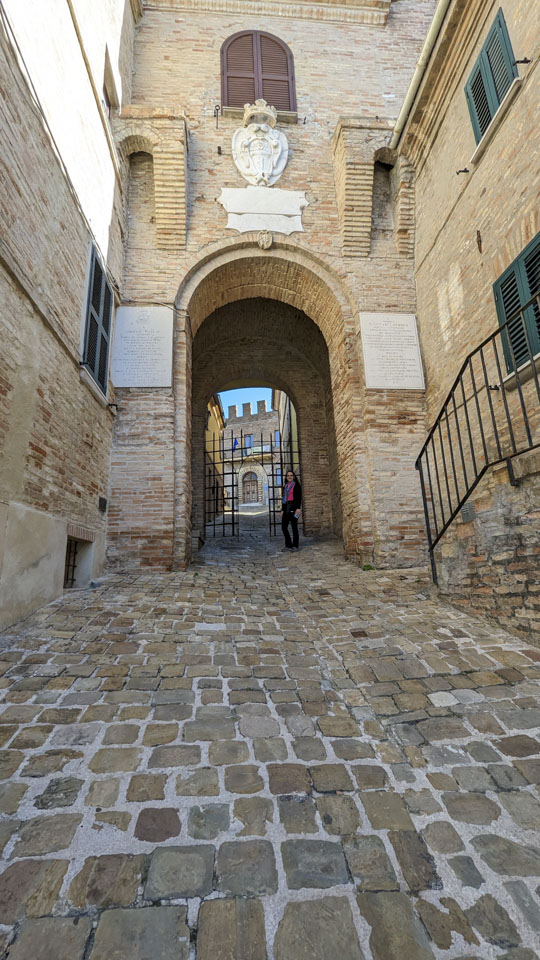
This cute little set of stairs led from the steep road to a flat plaza.
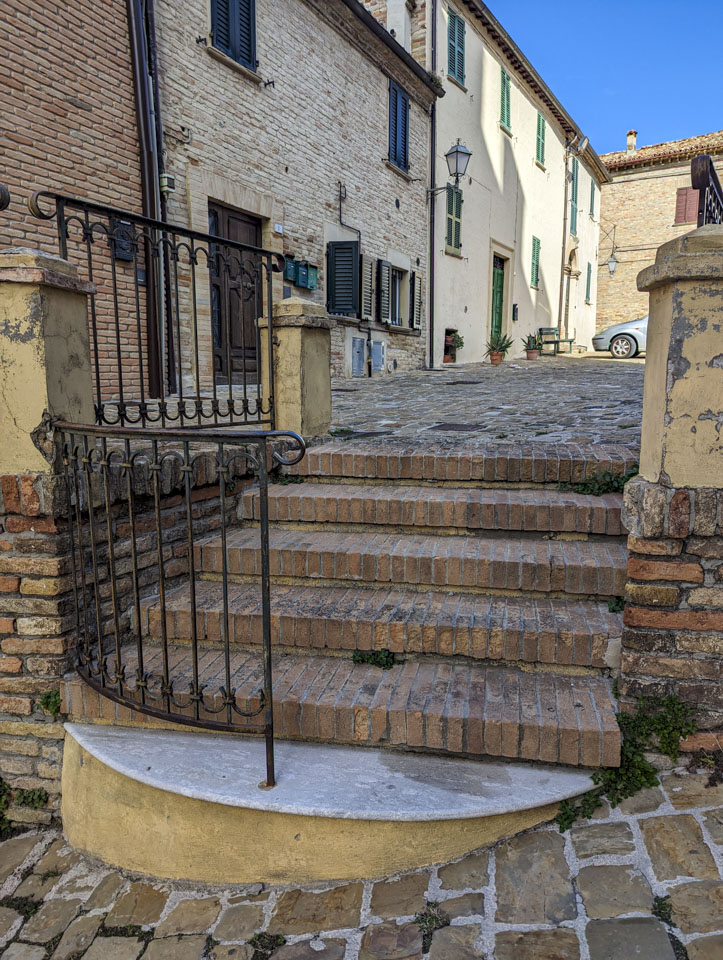
There is an impressive view from Sant'Angelo. Although it seems very far inland after driving through farmland and foothills, the village is less than 8 miles from the coast as the crow flies. With a bit of zooming in on the camera, there is a nice view of Pesaro.
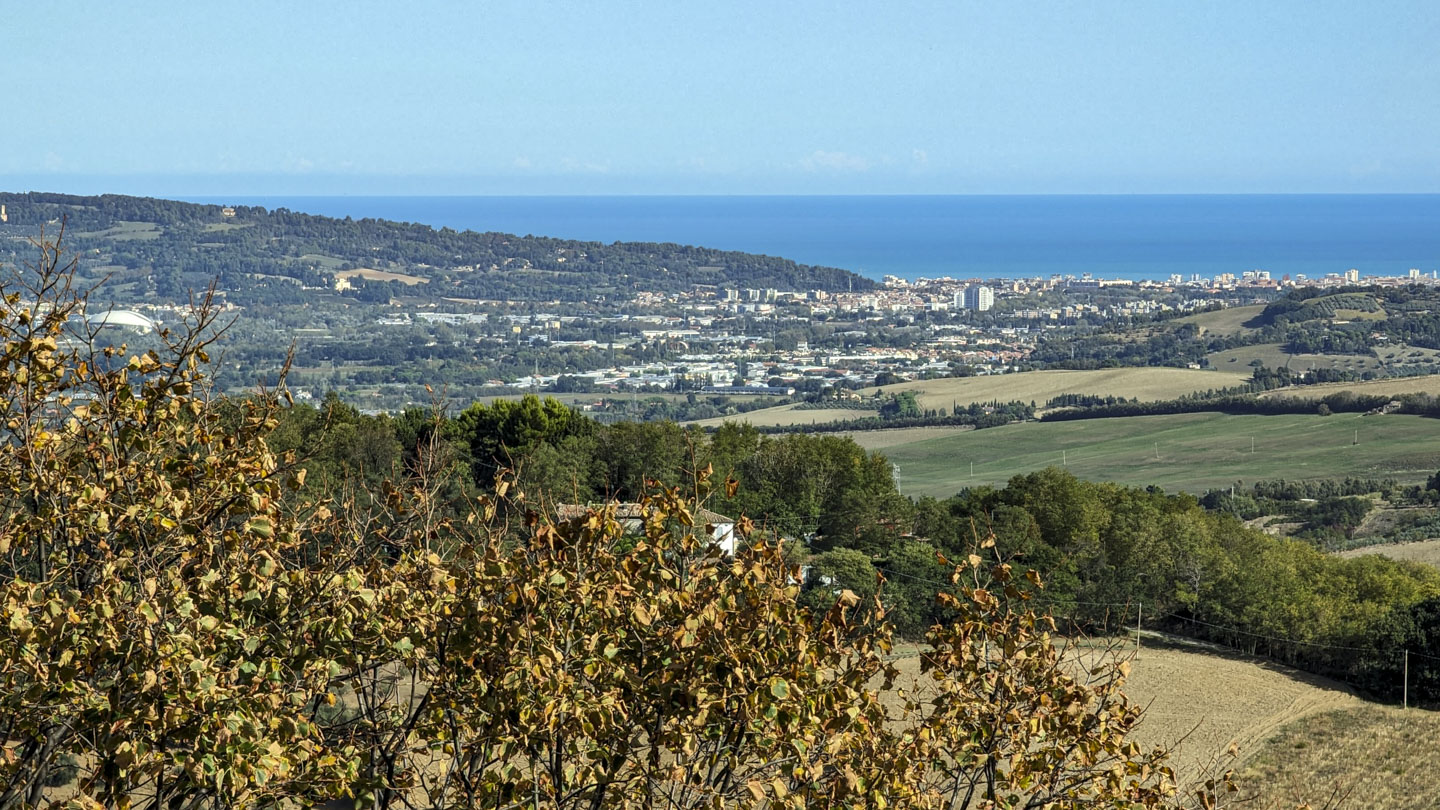
A bit further away (almost 20 miles for that crow) is San Marino. The large cliff on the left of this photograph is Monte Titano in San Marino.

Most of the buildings in the old city center have small garages. This particular one had the door open. Our visit was in October, after most produce has been harvested. A local man had some very large winter squash in this garage. We were able to compliment him on the squashes.
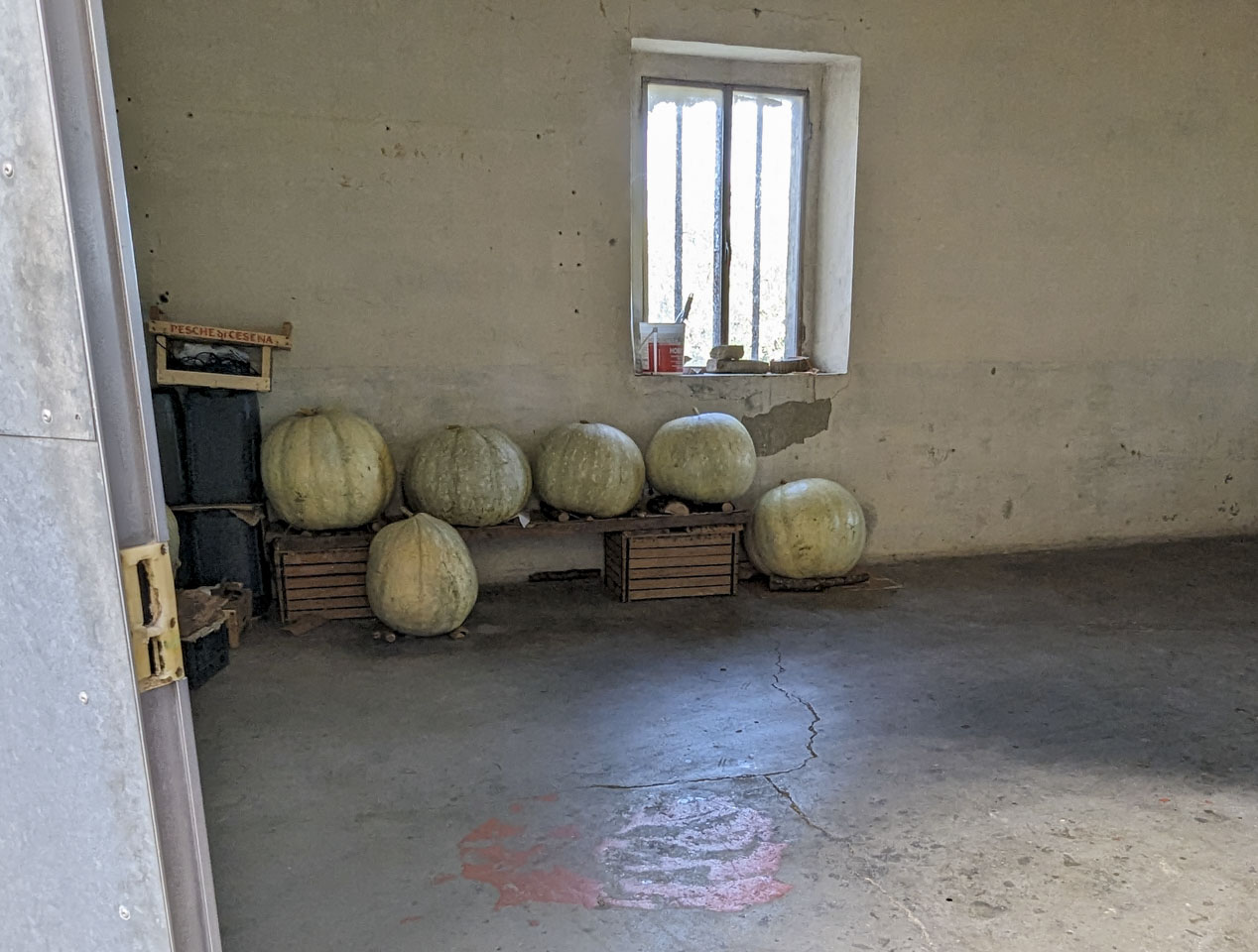
Despite being October, there were some pretty flowers still in bloom.
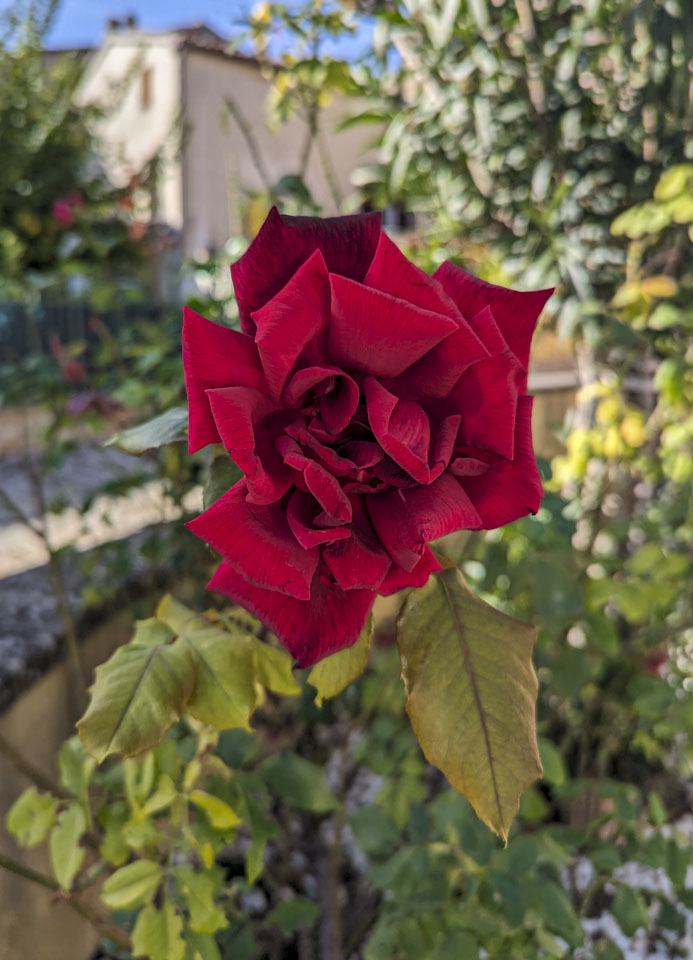
We have discussed the tiles that are on the roofs. This next picture gives an excellent view of the old style and the new style. The old style, on the left, splits terra cotta pipes in half and then offsets the halves. This creates channels for water to flow down plus covers for the spaces between the channels. The new style uses forms that have channels and covers built into one unit. They are certainly easier to place but not as interesting looking.

The restaurant that we had enjoyed in 2018 was still there and still open so we again had lunch there. There is a nice view from the dining area, which is very clean and modern and airy.

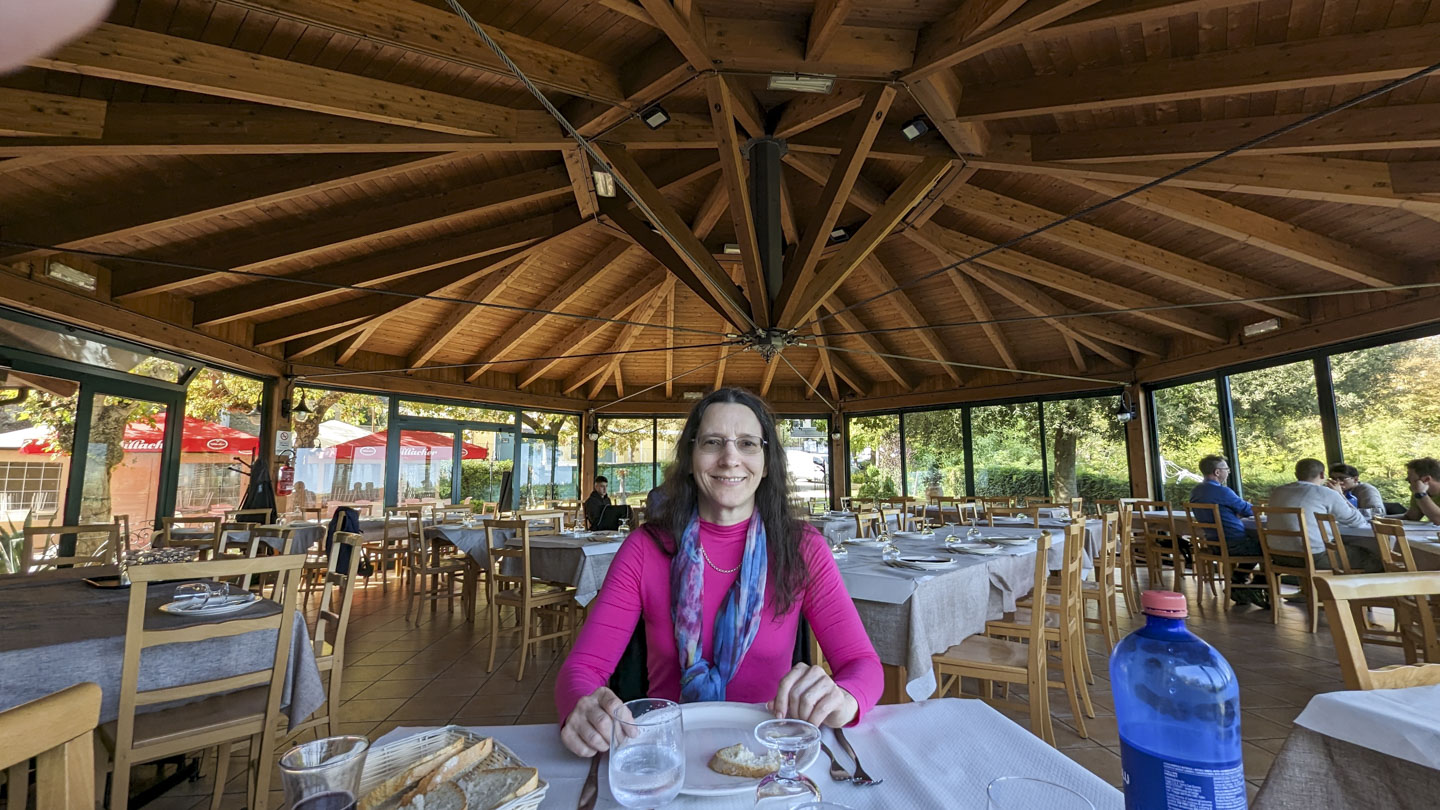
We had ... wait for it ... pasta for lunch! (Pasta is a pretty standard lunch to eat in Italy.)
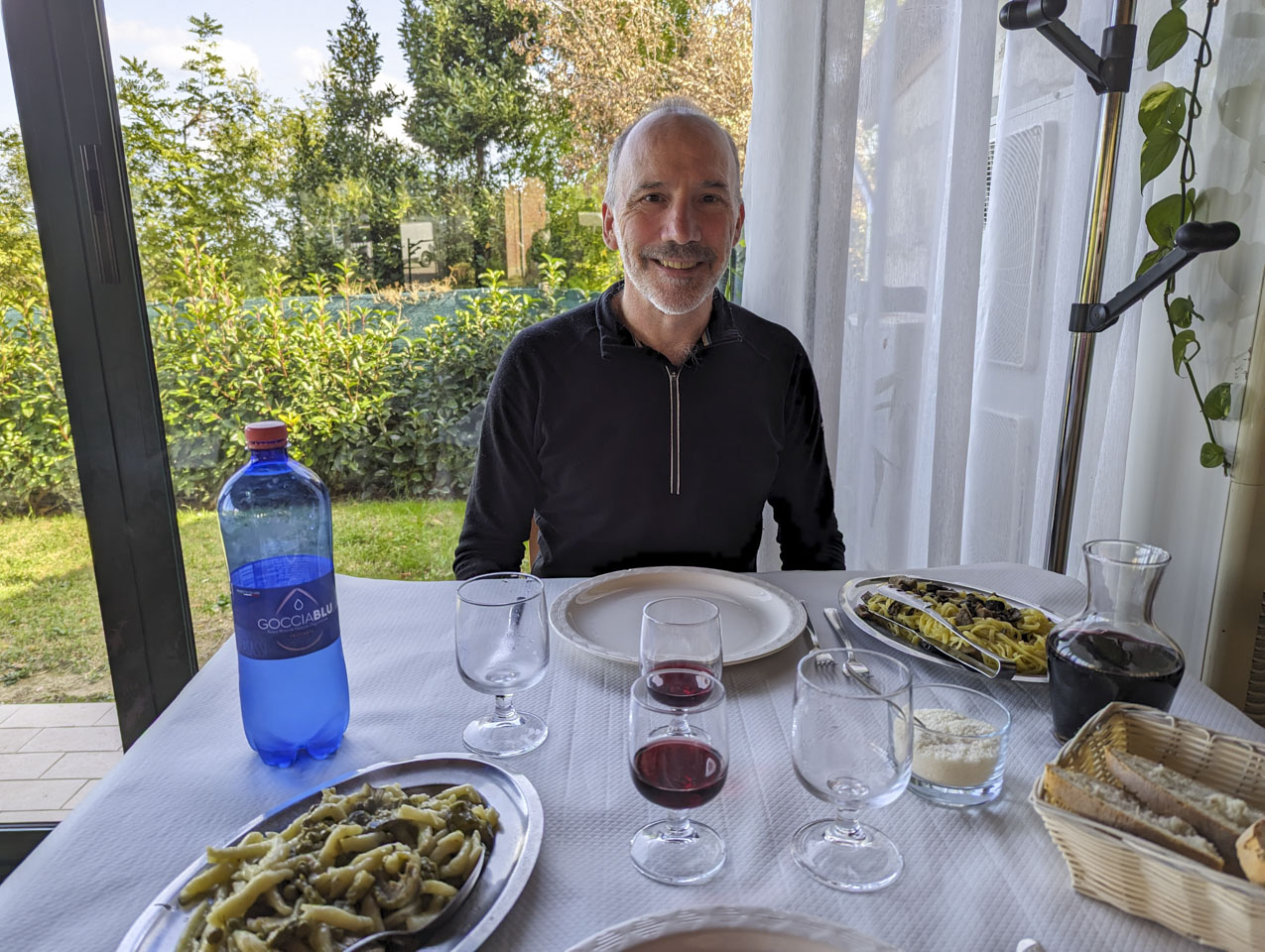
The adjacent village is Monteciccardo. In 2018, Carlo, a resident on this village, gave us a little tour. We were hoping to see him again. In a small town, they would certainly have known him at the local bar (aka café). Unfortunately, our timing was bad and the bar was closed. We still did a little walking around by ourselves. This nice looking building houses the city offices.

We again saw cardo (edible thistle plants) in gardens.
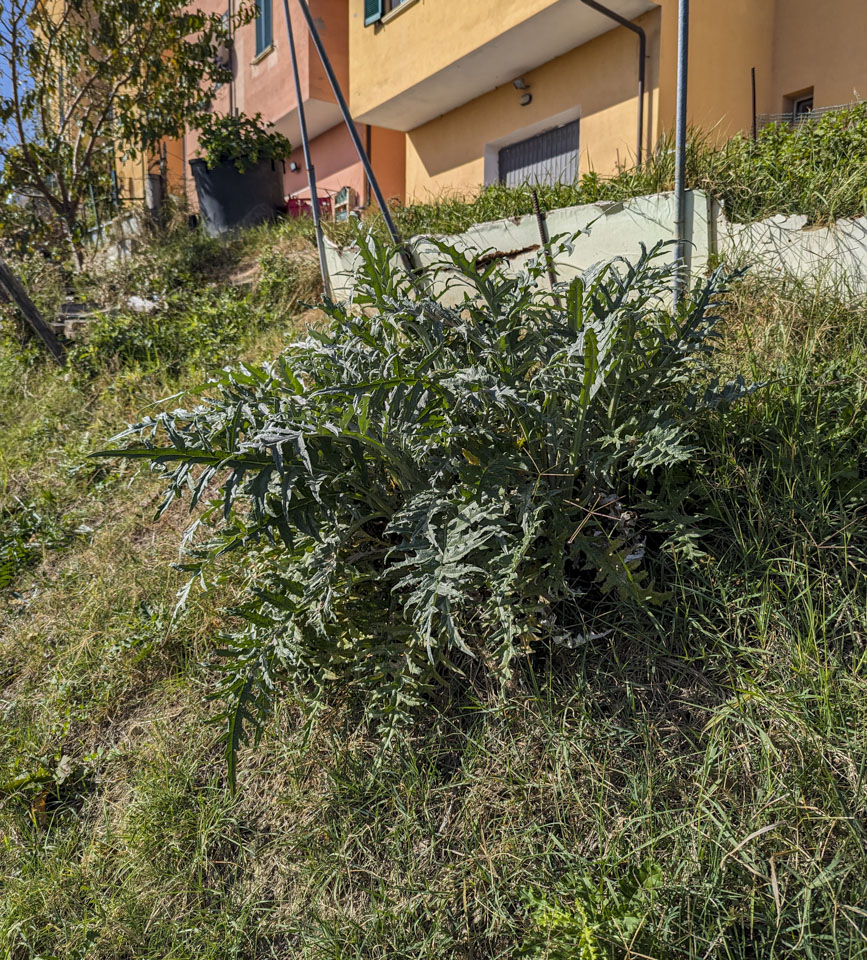
In 2018 we had walked down to a lookout spot on the wall. This year that spot was more difficult to get to, with backyards and gardens blocking the way.
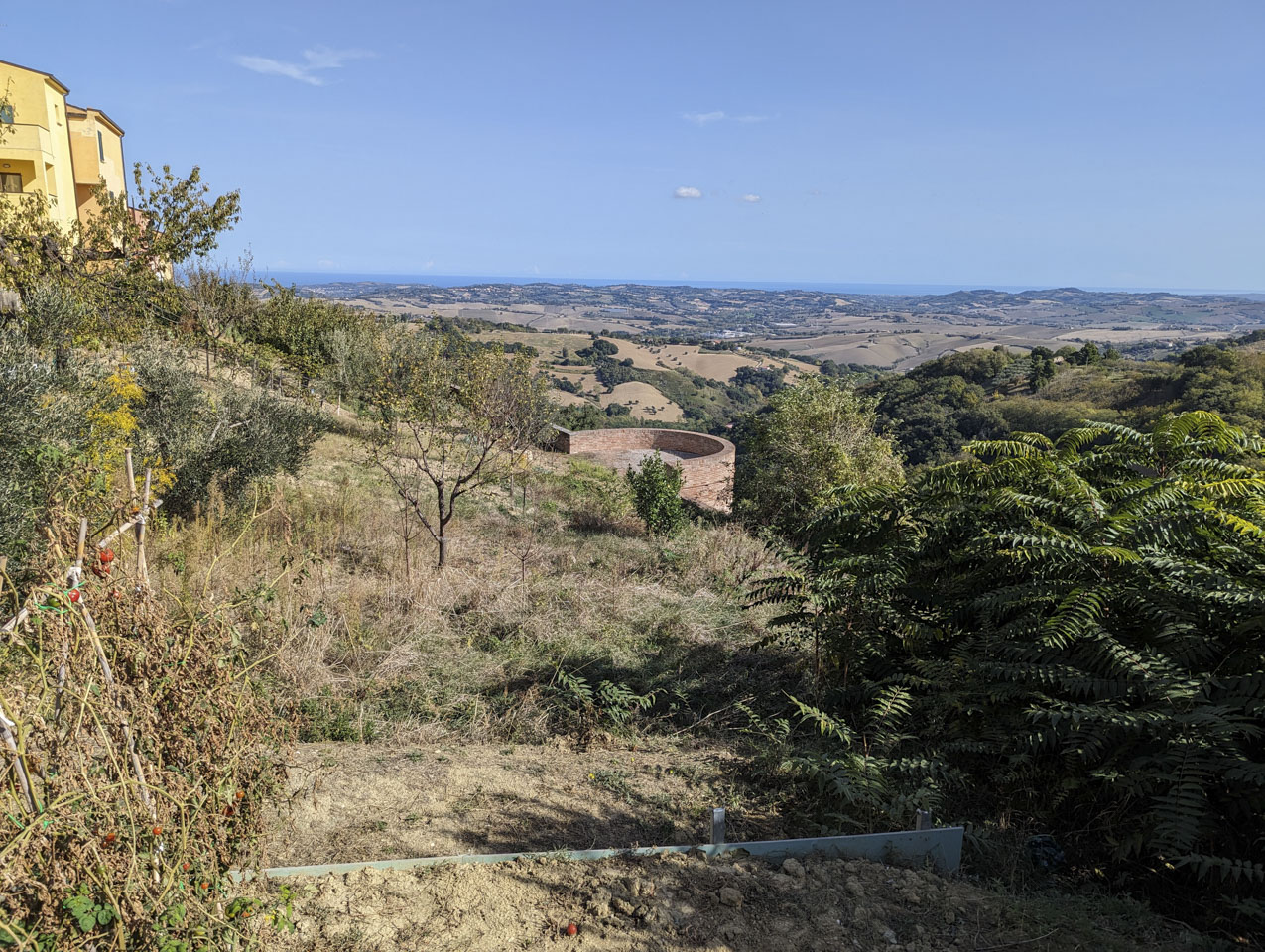
In one spot on the outside of the wall is an old water trough. There was no indication of what it was used for, but it is reminiscent of the spot we saw in Ascoli Piceno where people would go to wash clothing many many years ago.
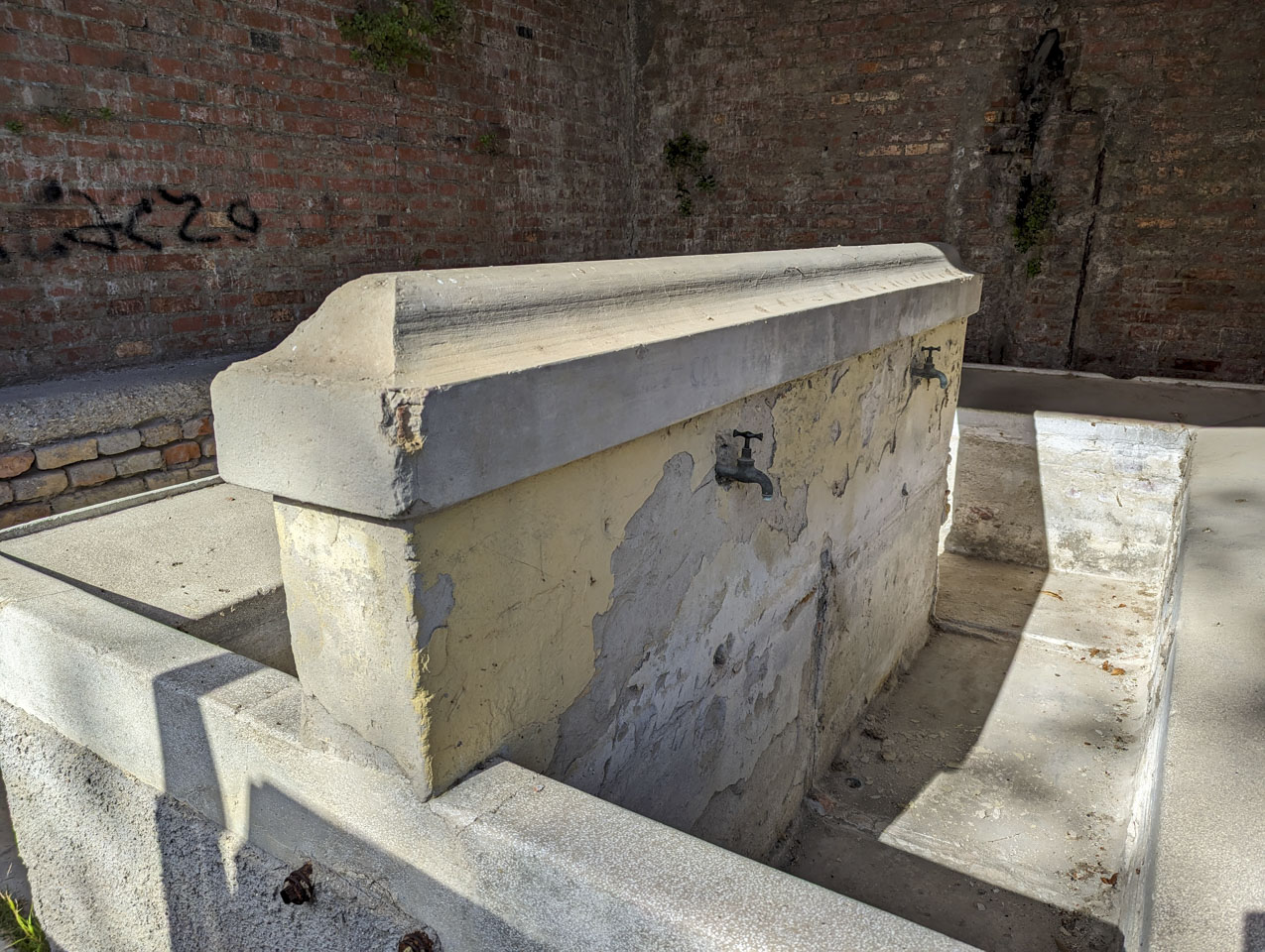
Updated July 2024